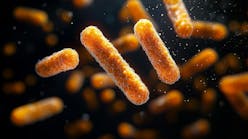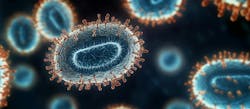NIH study suggests COVID-19 prevalence far exceeded earlier estimates
In a new study, researchers at the National Institutes of Health (NIH) report that the prevalence of COVID-19 in the United States during spring and summer of 2020 far exceeded the known number of cases and that infection affected the country unevenly.
For every diagnosed COVID-19 case in this time frame, the researchers estimate that there were 4.8 undiagnosed cases, representing an additional 16.8 million cases by July alone.
The team's analysis of blood samples from people who did not have a previously diagnosed SARS-CoV-2 infection, along with socioeconomic, health, and demographic data, offers insight into the undetected spread of the virus and subgroup vulnerability to undiagnosed infection. The findings were published in Science Translational Medicine.
This analysis follows another NIH study, reported in Clinical Infectious Diseases, that found evidence that SAR-CoV-2 infections were present in some states earlier than previously reported.
The current study “helps account for how quickly the virus spread to all corners of the country and the globe," said Bruce Tromberg, PhD, Director of the National Institute of Biomedical Imaging and Bioengineering (NIBIB), one of the NIH institutes who run the NIH SARS-CoV-2 Seroprevalence Project. "The information will be invaluable as we assess the best public health measures needed to keep people safe, as new — and even more transmissible — variants emerge and vaccine antibody response changes over time."
In addition to NIBIB, the research team includes scientists from the National Institute of Allergy and Infectious Diseases (NIAID), the National Center for Advancing Translational Sciences (NCATS); and the Frederick National Laboratory for Cancer Research, sponsored by the National Cancer Institute (NCI).
The team recruited over 240,000 volunteers from across the country, then selected 8,058 individuals from that pool through quota sampling to ensure that their study cohort was representative of the U.S. population. Each participant received a sample kit to return to NIH with a dab of dried blood or had blood drawn at NIH, most of which they supplied in an 11-week span between May 10 and July 31. Participants also completed a questionnaire that enabled further analysis of the study results.
The researchers used an enzyme-linked immunosorbent assay to detect antibodies that recognize protein regions from the SARS-CoV-2 virus, referred to as antigens. Antibodies in a blood sample can bind to these antigens. The team found that 304 of the approximately 8,000 blood samples were seropositive, meaning that they contained antibodies against the SARS-CoV-2 virus. The researchers estimated that 4.6% of U.S. adults had undiagnosed COVID-19 during their study period. They determined that each diagnosed case of COVID-19 corresponds to an estimated 4.8 undiagnosed cases of the disease during this time frame.
The team observed that:
· the youngest participants — those between the ages of 18 and 44 — had the highest estimated seropositivity, at 5.9%,
· estimated seropositivity was higher in females than in males (5.5% versus 3.5%, respectively),
· participants in the Mid-Atlantic and Northeast regions had the highest rates (8.6% and 7.5%, respectively), and participants in the Midwest had the lowest rates (1.6%),
· urban participants had a higher estimated seropositivity (5.3%) compared with rural participants (1.1%), and
· Black/African American respondents had the highest estimated seropositivity rate (14.2%), followed by Native American/Alaska Native (6.8%), Hispanic (6.1%), white/Caucasian (2.5%), and Asian (2%) respondents.
The researchers are currently following up with the enrolled participants to evaluate the six- and 12-month status of seroprevalence; it will include new analyses to differentiate antibodies from infection versus antibodies from vaccination, as well as antibody reactivity to variants of concern.





